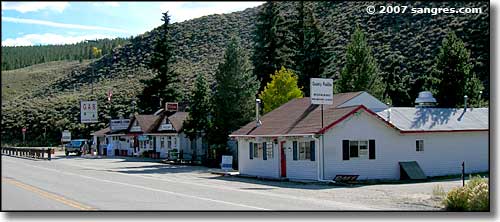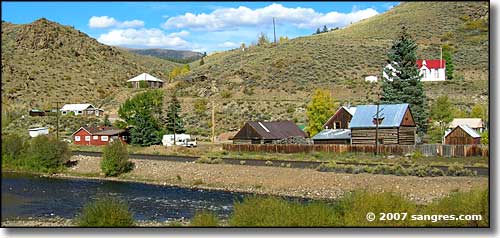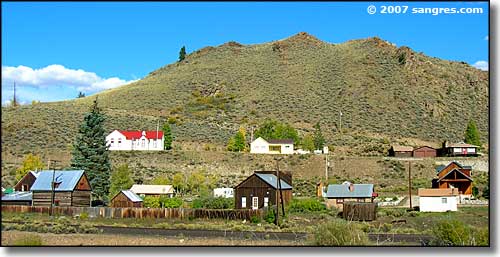
Granite, Colorado

The Granite Business District
Lake County was one of the two largest of the Colorado Territory’s original 17 counties. Granite was the third county seat (after Oro City and Dayton went bust) but was usurped by silver-rich Leadville in 1878. Then Granite remained the county seat of the newly created Chaffee County until 1880. As you can guess, the fortunes of county seats rose and fell in sync with mineral fortunes. The original 17 counties became 46 by 1889 and then 63 by 1913 (Broomfield County was established in 2001, making 64 counties in Colorado). Mineral strikes, railroad development, land cultivation, and Indian treaties fueled the propagation of new counties. And the new counties were also a reflection of demographic trends and a means of distributing patronage and political power.
In 1874 and ‘75, the Lake County War raged over water rights. It reached its climax in Granite when members of the “Committee of Safety” killed Probate Judge Elias Dyer in his own courtroom. The vigilante organization had been trying to purge the county of lawbreakers (real and imagined) using illegal arrests, coerced confessions and forced exile as tools in its campaign. Judge Dyer sentenced himself when he pressed charges against some 30 members of the Committee (who eventually all went free because no one would testify against them). The Territorial Government was afraid that the extent of disorder and lawlessness in Lake County might prevent Colorado from becoming a state in 1876.
While the cause of statehood survived the Lake County War, Lake County itself almost didn’t: by 1879, Lake County had lost nearly 90% of its territory. And the newly formed Chaffee County became the new home of all the land and all the vigilante Committeemen involved in the bloodshed. Then the mines in the Granite area went bust...

The Residential District

More residences

Unincorporated
Elevation: 9,012'
Longitude: -106.2622°W
Pike National Forest - San Isabel National Forest
Monarch Ski Area - Monarch Pass - Collegiate Peaks Scenic Byway
State Trust Lands & Wildlife Areas - Arkansas River
Arkansas Headwaters Recreation Area - Salida Municipal Golf Course
Mountains
Sangre de Cristo Mountains - Sawatch Mountains
Tabeguache Peak - Mt. Shavano - Mt. Princeton - Mt. Antero
National Park Service Sites - BLM Sites - National Wilderness Areas - Unique Natural Features
Outdoor Sports & Recreation - Ski & Snowboard Areas - Photo Galleries - Colorado Mountains
